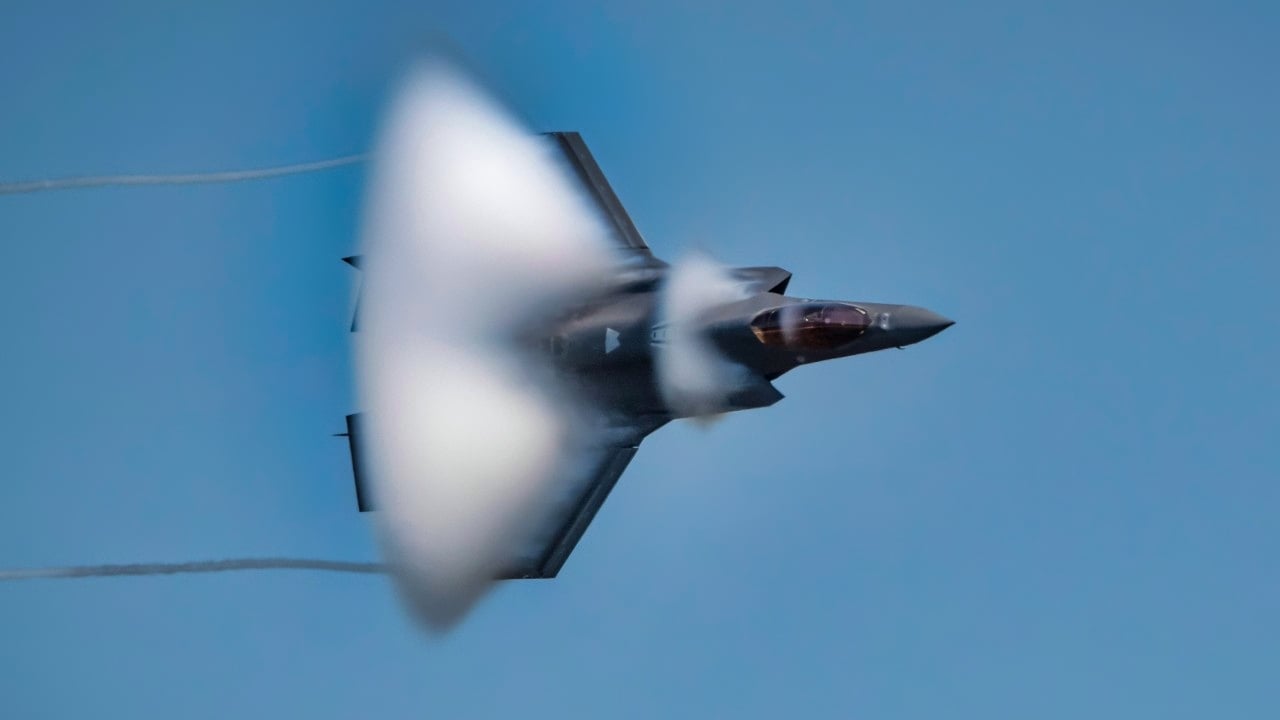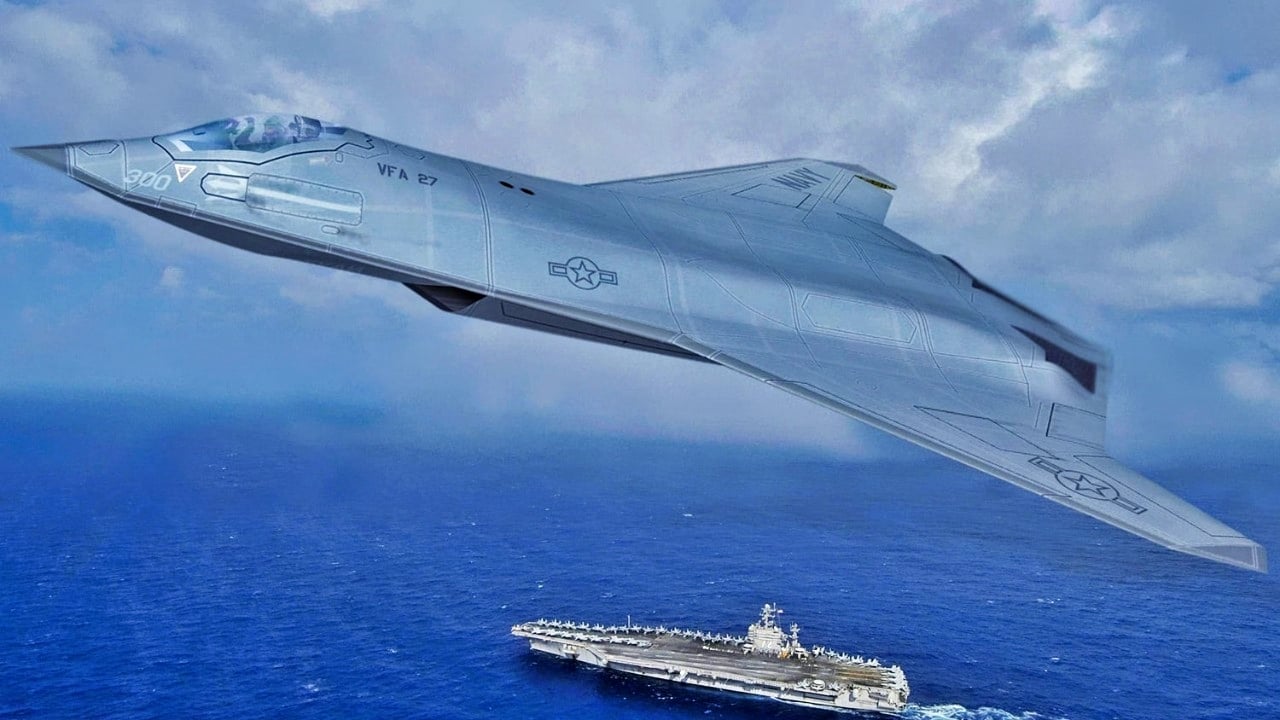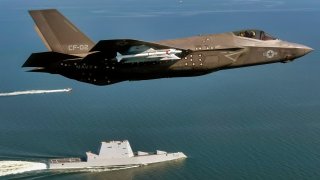The Navy's F-35 Has an Embarrassing Flaw It Would Rather Not Admit
The U.S. Navy’s F-35 Lightning II, despite being a premier fifth-generation stealth fighter, faces significant range limitations that could jeopardize aircraft carrier safety in Pacific conflicts.
What You Need to Know: The U.S. Navy’s F-35 Lightning II, despite being a premier fifth-generation stealth fighter, faces significant range limitations that could jeopardize aircraft carrier safety in Pacific conflicts.

-The F-35C variant offers a combat radius of 600 nautical miles, slightly surpassing the F/A-18 Super Hornet’s 570 nautical miles for air-to-air missions. However, its reduced payload and reliance on carriers for refueling require carriers to operate closer to adversaries, exposing them to advanced Chinese A2/AD systems with missiles reaching 2,200 nautical miles.
-To address these vulnerabilities, the Navy is developing the next-generation F/A-XX program, aiming for greater range and integration with unmanned systems to enhance carrier strike group survivability in contested environments.
Is the F-35’s Range Limiting the U.S. Navy’s Carrier Strategy?
Throughout its development history, the F-35 Lightning II was plagued by delays and budgetary overruns. Although it took much longer to reach initial operating capability than expected, the end result is a well-refined tactical aircraft. Detractors of the program have not been silenced, however, and continue to point out challenges facing the aircraft. As tensions with China increase and planners look to the wide expanse of the Pacific, questions about the F-35’s range become more acute, particularly in the case of the Navy.
Launching from a carrier far out at sea limits the options pilots have for landing to refuel; realistically, they usually must return to the boat. If their fighters don’t possess much range, that means the carrier must sail that much closer to the adversary in order to launch effective sorties, potentially exposing itself to enemy defenses.
So, does the F-35 have a range problem? And, if so, what can the Navy do about it?
F-35 Range and Specs
Widely considered to be the most dominant fifth-generation platform in the skies today, the F-35 Joint Strike Fighter incorporates stealth, versatility, range, top speed, and advanced electronic warfare/avionics. The F-35 comes in three different variants with their own specifications and, importantly, different ranges.
The F-35A is colloquially designated as the “runway queen” of the group as it is operated like a traditional fighter. This low-cost variant requires roughly 8,000 feet of standard runways to take off properly and land. The F-35B is the Marine Corps’ Lightning II variant. As the most mechanically complex of the three, the F-35B features short take-off and vertical landing (STOVL) capability.

The Navy operates the C “Charlie” model. Designed for carrier operations, the F-35C has the largest fuel load and, consequently, the longest range. With full tanks, its combat radius is 600 nm, edging out the F/A-18 Super Hornet at 570 nm in the air-to-air mission configuration. For attacking ground or surface targets, the F-35 maintains its radius while the Super Hornet’s radius drops to only 320 nm.
While the Lightning II does outrange the Super Hornet, it cannot carry nearly the same payload. It makes up for this drawback in that it is a stealth aircraft with a radar cross-section about three orders of magnitude less than that of the F/A-18.
All the stealth airplanes in the world won’t hide the carrier itself, however, and even though the F-35C has longer legs, the carrier would still have to place itself in harm’s way in order to carry out strikes.
The F/A-XX and the CSG
Although the F-35 is still a relatively new platform, the Navy is already looking for its next tactical aircraft in the form of the F/A-XX program. This jet, intended to replace the Super Hornet and the EA-18G Growler, is expected to have stealth capabilities, mount-directed energy weapons, and be capable of integrating with unmanned systems.
Depending on the direction the Navy pursues, it could also have an even greater range than the F-35.

Ultimately, however, no carrier aircraft will have enough range to keep the mothership safe. Tensions between Beijing and Washington have continued to escalate, indicating that the vast Indo-Pacific region is a likely future area of combat operations for the sixth-generation platform.
The Navy will require the jet to have long-range capabilities in order to evade China’s air defense systems across long distances. The rapid growth of the People Liberation Army’s anti-access/area denial (A2/AD) capabilities in the form of long-range, anti-ship ballistic missiles cannot be overstated.
Their current missiles are capable of reaching a staggering 2,200 nm or more, far beyond even the most ambitious of endurance aircraft.
Clearly, the Navy will have to consider other options for its carriers if it wants to keep them safe and relevant.
About the Author: Maya Carlin, Defense Expert
Maya Carlin, National Security Writer with The National Interest, is an analyst with the Center for Security Policy and a former Anna Sobol Levy Fellow at IDC Herzliya in Israel. She has by-lines in many publications, including The National Interest, Jerusalem Post, and Times of Israel. You can follow her on Twitter: @MayaCarlin.
All images are Creative Commons and/or Shutterstock.


